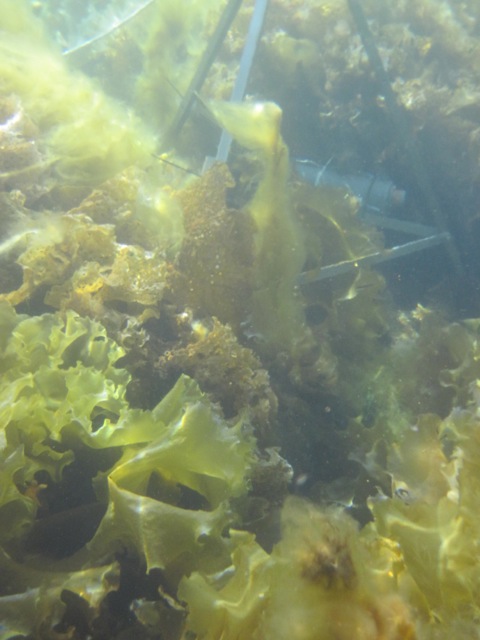Arctic midsummer in the kelp forests
Arctic midsummer in the kelp forests
Arctic midsummer in the kelp forests
Kelp forests are thriving in the long light midsummer days and this is the perfect time of year to measure photosynthesis and to determine the possible buffering role of the expanding marine vegetation against ocean acidification in coastal waters of Greenland.
Ocean acidification, the progressive decline in pH as anthropogenic CO2 accumulates in ocean waters, is believed to be a major threat to the Arctic ecosystem. However, kelp forests are expanding poleward with warming and may maintain high pH of coastal habitats during the Arctic summer. These forests are important coastal habitats for many organisms including blue mussel and other bivalves that must deposit calcium carbonate minerals to produce their shells and therefore are favored by pH levels which are sufficiently high to ensure a positive saturation state of carbonate minerals. Kelps forests can exhibit large diurnal excursions in pH as photosynthesis causes increases during the day while respiration causes declines during night. However, long Arctic summer days may maintain pH high during the critical period for growth and development of calcifiers and this effect may provide refuges for bivalves in a potentially more acidic Arctic ocean.
To test this hypothesis, we conduct a two-week field campaign in Disko Bay (69 N, West Greenland) over midsummer. Here we quantify pH-variability in kelp-dominated bays compared to bare sites (Photo 1 and 2). We deploy loggers of pH in the vegetation and we also sample intertidal pools where bivalves and other calcifyers often settle and grow. This will determine the conditions for calcification in the environments where algal photosynthesis may deplete CO2 and raise pH to very high values. We work from the Arctic Station (Qeqertarsuaq, Disko Island) belonging to the University of Copenhagen. The Station is located beautifully with great views of icebergs. We are also working in the laboratory to provide experimental confirmation of the role of marine plants in maintaining elevated pH levels over the day. So far our results seem to confirm the notion that kelp forests can significantly raise seawater pH and thereby potentially provide refugia from future ocean acidification to vulnerable Arctic organisms.
Submitted by Dorte Krause-Jensen, Núria Marba and Carlos Duarte

Kelp forest. Photo Carlos Duarte

"Bare" bottom. Photo Carlos Duarte

Logging pH in kelp forest. Photo Carlos Duarte

Measuring pH in a tidal pool in Arctic midsummer. Photo Carlos Duarte

Experimental setup to test the role of photoperiod in controlling pH levels in kelp forests. Photo Núria Marba
Project participants are:
Århus University, Denmark:
- Dorte Krause-Jensen, Project coordinator
- Mikael Sejr
- Kitte Linding Gerlich
- Jakob Thyrring
Instituto Mediterráneo de Estudios Avanzados (IMEDEA)/Consejo Superior de Investigaciones Científicas (CSIC), Spain:
- Carlos Duarte (cf. @duarteoceans for Twits on the expedition)
- Iris Hendriks
- Núria Marbà
- Marina Sanz
- Jordi Balrich
- Elia Perez
Greenland Institute of Natural Resources (GINR), Greenland:
- Martin Blicher
- Lorenz Meire
- Ole Geertz-Hansen





